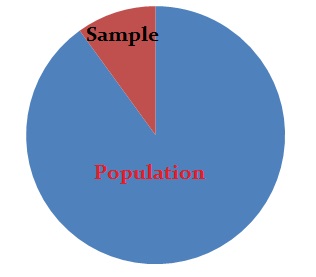Statistics Definitions > 10% Condition
10% Condition
The 10% condition states that sample sizes should be no more than 10% of the population. Whenever samples are involved in statistics, check the condition to ensure you have sound results. Some statisticians argue that a 5% condition is better than 10% if you want to use a standard normal model.

For example, the 10% condition normally applies when you:
- Draw samples without replacement in the Central Limit Theorem.
- Have proportions from two groups.
- Check differences of means for very small populations or an extremely large sample.
- Use student’s-t test.
- Are dealing with Bernoulli trials that are not independent events. Normally, Bernoulli trials are independent, but it’s okay to violate that rule as long as the sample size is less than 10% of the population.
The 10% condition isn’t normally checked for:
- Chi-square tests
- Differences of means (except for small populations or for extremely large samples).
- Randomized experiments (there is no sampling in randomized experiments, so the 10% condition can’t be used).
Usually, you won’t find the 10% condition mentioned for statistical means. When you make inferences about proportions, the 10% condition is necessary because of the large samples. But for means, the samples are usually smaller, making the condition necessary only if you are sampling from a very small population.
The condition applies in Bernoulli trials because in the vast majority of cases you sample without replacement, For example, in a telephone survey asking “yes” or “no,” you don’t put a person who has already answered the question back in the pool.
Where does the 10 percent condition come from?
The condition is statistically sound because of the mathematical proofs behind the assumption. The proof is a little beyond an elementary statistics or AP statistics class, but if you are really interested in knowing the mechanics behind the condition, The University of Texas has a pretty good rundown on the math.
References
Kotz, S.; et al., eds. (2006), Encyclopedia of Statistical Sciences, Wiley.
Lindstrom, D. (2010). Schaum’s Easy Outline of Statistics, Second Edition (Schaum’s Easy Outlines) 2nd Edition. McGraw-Hill Education